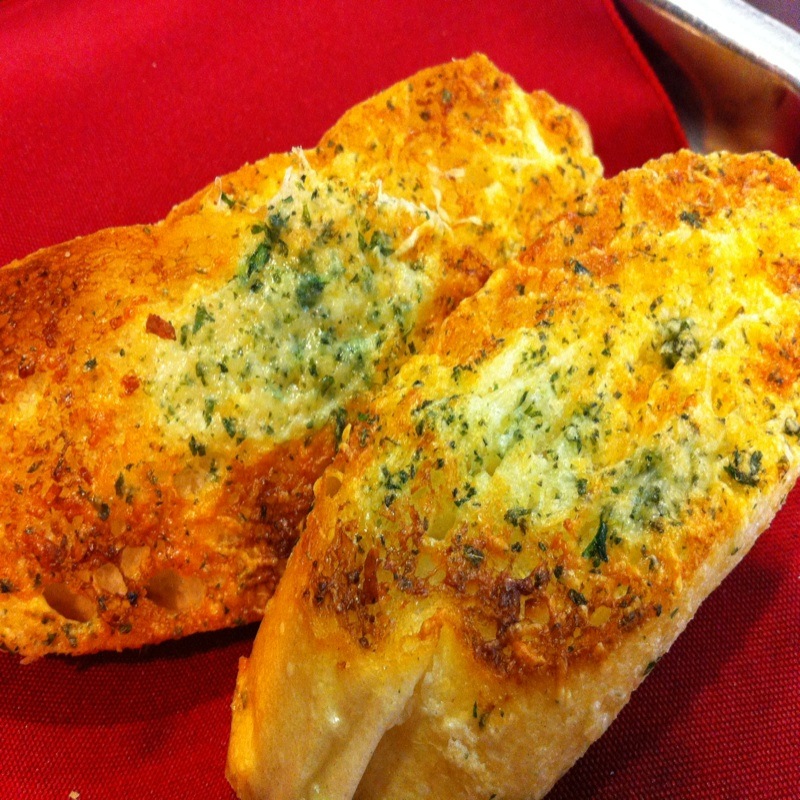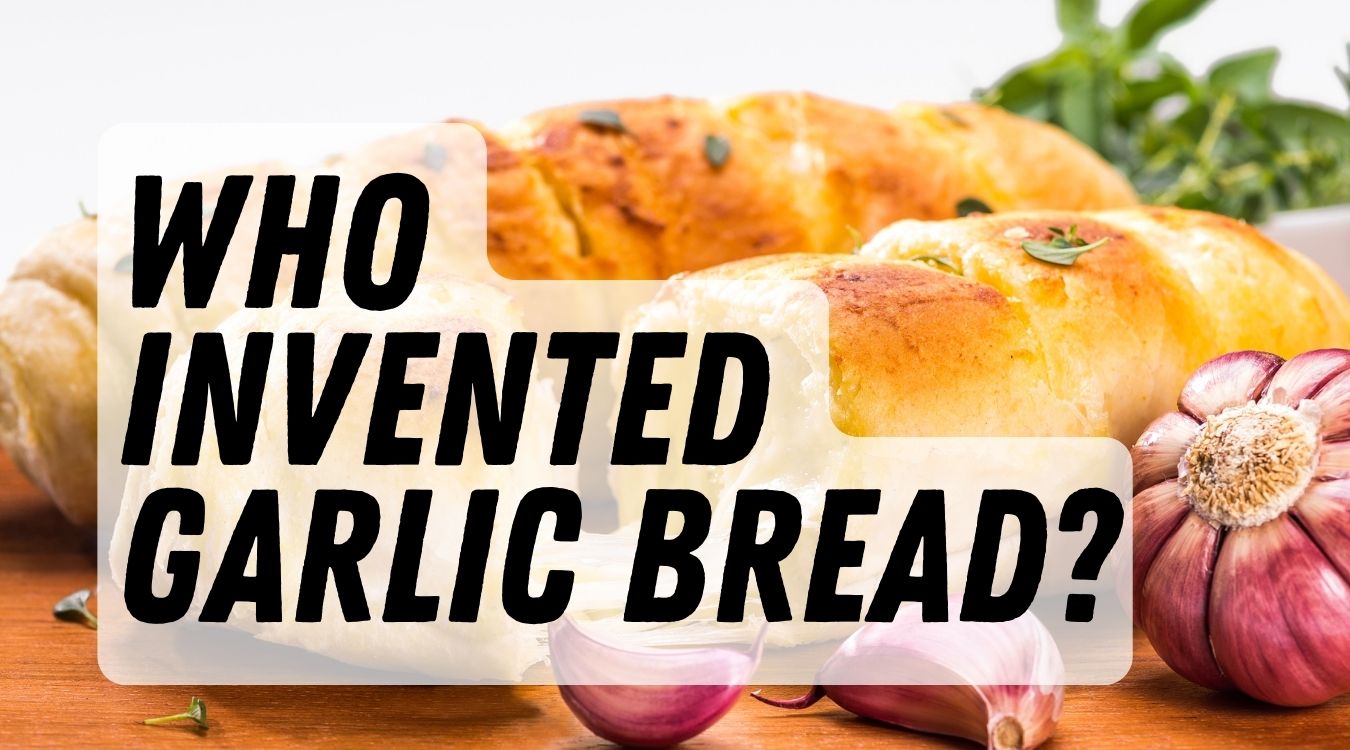Ever wondered who invented garlic bread? What is the true garlic bread history? The garlic bread (typically roasted or broiled bread) originates from Italy. There is a garlic butter or olive oil topping on the bread, at times even clarified butter is used. Usually, the bread is roasted or toasted in this process, which brings out the natural flavor of garlic. The recipe calls for either Italian bread or the baguette type of bread.
In this way, bread with garlic flavor can be prepared similar to Bruschetta, which may represent the origin of bread. Bruschetta consists of toasted bread that has been drizzled liberally with olive oil and rubbed with minced garlic (optional). As a topping for bread, a variety of cheeses is commonly used, such as mozzarella, cheddar, and feta.
Table of Contents
History of Garlic Bread Recipe
Four million Italians immigrated to the United States between 1880 and 1924. They recreated the cuisine of their homeland with local ingredients once they arrived in the Americas. You need to thank them for the pizza, garlic bread, and paste you enjoy today!
It is believed that garlic bread was first made in the south of Europe where garlic has been grown for a very long time. It is because of this that many garlic recipes have been created. What most people love today as garlic bread is the derivative of the Italian Bruschetta, which is bread grilled over hot coals on both sides. This bread is then slathered liberally in olive oil. It is optional to rub the top with garlic.
Since the Mediterranean immigrants brought this recipe to the US, it has become a popular dish in most US restaurants along with pasta and fish. Bruschetta bread has come into existence in many different forms, including toasted bread with chopped onions and tomato toppings. Currently, the refined version of the bread is baked in the oven and rubbed with butter or olive oil.
Due to a lack of olive oil in the US at that time, butter was the alternative to olive oil in garlic bread.
How to Make Garlic Bread

There are two main types of garlic bread; toasty garlic bread and soft garlic bread, and both are slightly different.
Sliced in half, butter and garlic are spread on toasty garlic bread, then it is baked open-faced in the oven. Broil it at the end to make it crisper.
To prepare the garlic bread, slice it like an accordion (cut the slices as if they were slices, but don’t go through all the way), then spread the butter mixer on the slices. The bread should be wrapped up in foil and baked. The garlicky butter will keep the bread soft while infusing every slice with flavor. We love to make ours with a French bread loaf or any other French baguette.
Below we have listed a soft garlic bread recipe and a toasty garlic bread recipe. Pick one according to your preferences and make your own homemade garlic bread!
TOASTED GARLIC BREAD
- Heat your conventional or bread oven to 350 degrees Fahrenheit.
- Slice the loaf horizontally in half to create sliced bread. In a small bowl, combine the butter, garlic, and parsley. Apply butter mixture to both bread halves.
- Bake at 350°F (175°C) for 10 minutes on a baking sheet that can survive high heat.
- Take the pan out of the oven. If you like cheesy garlic bread, top with freshly grated Parmesan cheese. Place the pan on the highest rack of the oven.
- For 2-3 minutes, broil on high heat. Wait for the cheese to bubble and the edges to become roasted a bit.
- Let cool for a minute after removing from the oven. Slice the bread into 1-inch thick slices after removing it from the pan using a bread knife. Enjoy this amazing meal called garlic toast!
SOFT GARLIC BREAD
- Heat the oven to 350 degrees Fahrenheit.
- As stated above, prepare the butter, garlic, and parsley mixture.
- Slice the bread 1 inch thick but not till the end.
- Put the mixture you just made between the slices.
- The bread should be wrapped in aluminum foil and baked for 15 minutes in a 350°F (175°C) oven until the butter begins to melt.
- Remove the loaf from the foil and wrap it in a clean tea towel before serving. Slice it up to eat!
Can garlic bread help you lose weight?
It has been known for years that garlic boosts metabolism naturally. You are able to burn off calories at a higher rate when your metabolism is faster, which means fewer fat deposits. It may also reduce appetite.
What is garlic bread good for?
Depending on the bread used, garlic bread will have different benefits. To make garlic bread, use whole wheat brown bread which is made from whole wheat flour and is rich in fibre and other nutrients. In addition, garlic stimulates the immune system, regulates blood sugar levels, and prevents heart disease.
Is store-bought garlic bread healthy?
If you buy garlic bread from the store, it may have artificial flavors and butter, so it is not healthy. A nutrient-dense loaf of bread, on the other hand, is nearly nutrient-free. That makes it not a healthy choice. Fresh minced garlic, in particular, is highly beneficial for the health of humans. If you cannot compromise on the taste, use oven-roasted garlic for your bread.
Who invented bread?
A history of bread says it was first made in the Middle East, specifically Egypt, around 8000 BC. In its closest form, dried grains were crushed and baked into what is commonly known as chapatis (India) or tortillas (Mexico).
Why is garlic so popular?
There are many varieties of garlic grown around the world, and it is used in cooking because of its strong aroma and delicious taste. Garlic was, however, primarily used for health and medicinal purposes throughout ancient history.
Conclusion
Now you know who invented garlic bread and the true garlic bread history.
We hope that this guide proved to be informative to you and answered all your garlic bread-related questions. It sure made us crave some delicious cheesy garlic bread! If you have more information about Italian or French bread and their history that you think can benefit the readers, feel free to let us know! We love writing about Italian dishes.
